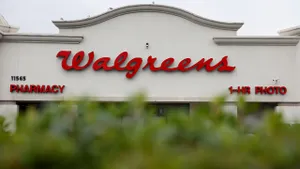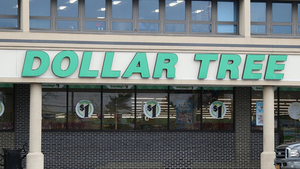RETOOLING THE WORKS
OKLAHOMA CITY -- Fleming Cos. here plans to make the relaunch of re-engineering a pivotal event in an active 1997.In a year expected to be marked by new strides in merchandising, corporate retail and customer prospecting, the retooling of re-engineering holds special significance.The nation's largest wholesaler opted to delay the continued rollout of its highly ambitious re-engineering program in
December 23, 1996
DAVID ORGEL
OKLAHOMA CITY -- Fleming Cos. here plans to make the relaunch of re-engineering a pivotal event in an active 1997.
In a year expected to be marked by new strides in merchandising, corporate retail and customer prospecting, the retooling of re-engineering holds special significance.
The nation's largest wholesaler opted to delay the continued rollout of its highly ambitious re-engineering program in 1996 because of financial considerations and the need to rethink customer confusion over the process. But in 1997, Fleming will reshape the initiative with new options, upgraded technologies and a determination to ease customer concerns, top executives said in an interview with SN.
"At the moment, there are probably more things ready to come out of the box in re-engineering than at any other time in the process, except when the company launched the first wave of re-engineering for its 17 divisions," said William Dowd, president and chief operating officer, who has been deeply involved in the process.
"In 1997 we'll go through the 17 divisions again and restage the re-engineering effort with a series of new versions and improvements to the Fleming Flexible Marketing Plan and the technology -- Visionet -- which will be a major thrust of the re-engineering activity. By the end of 1997 we will have introduced a massive amount of new software, training and communications protocols. Re-engineering will look very different by the end of 1997."
The new year will also see faster growth in some other strategic efforts. "For the first time in three years, we're back in the strategic planning mode," said Robert Stauth, chairman and chief executive officer. "We've been so busy implementing and absorbing our Scrivner acquisition [which occurred in 1994] that we haven't thought too much about the future. But the fact that we can start thinking about growing the Fleming retail group, meal solutions, and how we get more stores into the voluntary groups -- these represent new thinking that we haven't had the time to work on."
Other goals for Fleming next year include the launching of a revised private-label program featuring more stockkeeping units, but fewer labels, and the continued expansion of productivity gains. All of this, according to executives, will be tackled while paying down debt and handling major litigation challenges.
Looming large on the litigation front is the second trial in the case brought by David's Supermarkets, Grandview, Texas. The first trial in Texas last year resulted in a $211 million damage award. A jury found Fleming and a retired regional executive committed breach of contract, fraud and deceptive practices by inflating vendor prices and overcharging customer David's. However, the judge eventually recused himself and called for a new trial because of financial ties to David's owner, David Waldrip. That new trial, which had been scheduled for Jan. 13, has now been delayed until May 12.
Fleming, which posted net sales last year of $17.5 billion, has seen declining sales in 1996. Overall sales fell about 6% in the first three quarters of this year. This was partly attributed to the company's efforts to repay debt rather than making significant investments to expand business.
Fleming's year-to-date net earnings fell 57% over the first 40 weeks of the year, with a heavy effect from special charges. But operating earnings have been showing good momentum, Stauth said, growing 24% in the latest quarter.
Financial analysts note that Fleming is taking a proactive stance in remaking the company, but they add that the firm's challenges are big ones.
"The biggest concerns are that wholesale sales have been declining, and that it's been difficult to get re-engineering back on track," said Ronald Buck, director and analyst at Standard & Poors, New York, which rates Fleming's corporate bonds. "The 60% of sales base that's not re-engineered [17 of 35 divisions are re-engineered so far] is a big concern: you may have those customers hedging their bets on what they're willing to commit to. There are a number of problems with re-engineering, but Fleming is also doing quite a bit of work with customers to correct it."
Margaret Cannella, managing director and retail analyst, Citicorp Securities, New York, said, "The prospects ahead that they're describing are difficult, and they seem to be planning as carefully as possible for a major transformation in the company. With the grocery industry consolidating as rapidly as it is, it will be a challenge for Fleming to attract new customers. There might be fewer wholesale competitors, but also a potentially smaller retail market; it is critical to Fleming's transformation that it re-engineer."
One analyst who requested anonymity noted that Fleming "needs to go forward with re-engineering for the company to have a future, but it has had trouble going forward due to customer losses, legal pressures and re-engineering problems."
A New Look for Re-engineering
Fleming executives are confident that the relaunch of re-engineering will be a highly positive move for the company. It may be the development that has the biggest impact for 1997, observers noted. For many independent customers accustomed to traditional styles of doing business, re-engineering, launched in late 1994 with changes in pricing, technology and organizational structures, came as a shock when unveiled across 17 divisions in the West, Midwest and South.
Re-engineering's pricing program, called the Fleming Flexible Marketing Plan, was a new way of doing business. Grounded on activity-based costing principles, it enabled Fleming to charge customers for all of the components required to service a particular customer. Fleming's detailed lists of charges showed retailers their exact costs and gave them the power to change their cost structure.
"In the old system, and the way most wholesalers do business today, all of those costs are averaged and become a one-fee-fits-all that goes with every product and all the services, with some of the services even being subsidized," Stauth said. "This was referred to as defined cost plus a fee."
While FFMP's goal was to help customers analyze their own usages and costs and perhaps change their behavior, the moves were sometimes viewed as radical and complicated. Customers were sometimes intimidated by the detailed breakdown of charges. Moreover, Fleming encouraged customers to conduct business via computer linkups that many weren't eager to handle. Often it seemed like an all-or-nothing approach.
Indeed, Fleming stepped into re-engineering at a far quicker pace than its main rival, Supervalu, Minneapolis. "Fleming started first and jumped in with both feet," said analyst Buck. "Fleming re-engineered 40% of its base, then found some customers adverse, confused. Supervalu faced the same issue of customer resistance, but it started on such a small scale that it didn't have the same impact.
"Fleming's strategy is a good one, but it's had problems in execution. While Fleming and Supervalu are internally doing some things different, they have similar objectives in terms of changing their systems around, at least in terms of what the customer sees. In hindsight, Fleming went too quick on re-engineering, without dealing with customer concerns. But hindsight is 20/20, and Fleming felt it necessary to work on a goal of achieving critical mass."
For 1997, Fleming will place emphasis on giving choices to customers. It has developed a gradation approach to re-engineering in which customers can choose the level that's right for them. The new plans will first be tried in the 17 facilities already re-engineered before they are rolled out across Fleming's other 18 divisions, many of which are in the Eastern part of the country.
"We're going to offer customers three ways of doing business so that each will be able to find their own comfort zone," Dowd said, adding that he expects Fleming's customer base to be split about equally among the different methods.
Collectively, the three will make up what's now being called Fleming's Flexible Marketing Plans.
The most detailed re-engineering version will be similar to the one currently in place. Fleming will now call that FlexPro. It is for retailers that want to "partner up and be almost a truly connected entity to Fleming so they are driving decisions," Dowd said.
"There's a lot more work in that. Not all customers are willing to do that."
Fleming's midlevel version is called FlexStar. It is in the process of being introduced in the San Antonio division in a training mode, Stauth said. "We hope to introduce it to the retailers right after the first of the year. FlexStar delivers about the same capabilities and benefits as FlexPro, but just requires a little less effort from the retailer."
Added Dowd, "A Retailer won't have to go in and become an expert on the use of the PC, or ordering with Fleming. It cuts away a lot of the complexity, but also some of the power."
The simplest version, whose rollout timetable hasn't yet been determined, is called FlexMate. Customers won't have to deal with lists of detailed charges under this approach. The charges to retailers will be displayed with less of a breakout in a more traditional approach. In actuality, Fleming will do all the activity-based costing and customized pricing for each retailer, but will keep the extra information in the background. This third level would particularly suit smaller retailers that haven't got the manpower for the higher technology and detailed pricing structures of the other versions.
"What we're trying to do is push the complexity behind the stage, so the customer doesn't have to see the mechanics of everything that goes on," Dowd said. "To him, all he sees is a simplistic view. If he doesn't want the decision-making power, we'll try to make life easier for him."
All of re-engineering's features, including technology, will fall into different levels for retailers, executives stressed.
Fleming wants to fine-tune its approach before extending it to the 18 divisions that have never been re-engineered once. The rollout in the East probably would start after 1997, although it could begin at the end of '97, Dowd said.
"We promised the people in the East that we would not start re-engineering those divisions until we have a bulletproof set of systems and installation processes," Dowd said.
Stauth added, "We're going to be preparing ourselves for the training related to the rollout eastward."
Visionet to Pack a Greater Punch
Fleming's re-engineering will rely heavily on the upgrade of its on-line communications product called Visionet. The program links Fleming-served retailers with product supply centers, category managers and vendors. One of its features is the "Opportunity Wire," which enables Fleming to alert retailers to special, timely purchasing opportunities and delivery information.
Fleming will begin its beta test of Visionet 2.0 in February, and in the second quarter it will begin to launch that product across the 17 divisions. This newest version, which will be on Windows NT, will include a sophisticated search engine for sorting product information by family group, commodity class and other variables, explained Sonny Sanchez, director of Retail Visionet Services. The new Visionet will be easier to load and contain an easier user interface.
"Retailers will be able to punch in a UPC and see all items in the family group, such as like items in other brands, for comparison shopping," Sanchez said.
The new program will also introduce an electronic vendor catalog, Internet access, integrated e-mail and a multimedia marketing event calendar.
For all its growing pains, re-engineering has thus far succeeded in the important goal of bringing cost savings to customers, Stauth stressed. "We have passed through to customers this year an additional $100 million that was not in our system prior to re-engineering," he said. "That's like a 15% improvement in gross margin that wasn't there before. That's the truest test to say how it's working."
Re-engineering is already benefiting from a recent reorganization of reporting lines across Fleming's divisions, Dowd said. Last summer, Fleming named 10 operating group presidents to oversee its 35 divisions.
"Before we had 35 divisions literally reporting to two people," Dowd said. "This is more rational. It creates a vehicle by which we can pull together cross-functional communications to give customers a focal point on issues. We wanted these executives in place before the next stage. They will be responsible for the actual execution of re-engineering."
Spotlight on the Top Line
While re-engineering is on the front burner at Fleming, sales-building efforts are also getting top priority. Fleming put an emphasis on customer prospecting early in 1996, but the year's events stalled that effort.
"Historically, we've done an excellent job at prospecting customers away from existing wholesalers," Stauth said. "But when you go into a major change like re-engineering, it made prospecting more difficult. Potential customers said, 'I'm going to wait until this stuff is down. I'm not sure what this is about.' And on top of that, when the [David's] lawsuit took place in early '96, it waved the yellow flag that said caution.
"And so we've been working our way through both of these. And as we went through the third quarter, it was clear customers began to regain confidence in terms of doing business with Fleming. Our prospecting efforts now are getting back to where they were."
In that regard, Fleming will further benefit from changes instituted by Dowd, including a new sales team formed last January, a move to supply smaller wholesalers, and the reliance on Visionet to help open up limited first contacts with potential customers.
A major plus in Fleming's sales drive is a new expansion of Fleming's business arrangement with Kmart's supercenter division. Kmart is Fleming's largest single customer.
"We just picked up an additional $50 million with Kmart that we're very excited about," Stauth said. "The $50 million is all for supercenters, which is the only business we've done with them. It represents existing supercenters that were supplied by other suppliers. Kmart realigned its marketing structure, and wanted the distribution centers supporting its new structure to be in certain areas."
Fleming not only picked up the business; it also managed to streamline its Kmart supply operation. "We're doing the additional business out of fewer distribution centers," Stauth said.
Merchandising on the Front Burner
Fleming's sales drive is also relying on merchandising programs that will build the top line. Fleming, like the rest of the industry, is eyeing big potential from home-meal replacement. Stauth, who is vice chairman of Food Distributors International, Falls Church, Va., has been a big proponent of the Foodservice 2005 study. Conducted by McKinsey & Co., New York, the study said supermarket food-service sales will reach $28 billion in 10 years, but will grow at a slower rate than some other formats.
While he points to the wake-up call the study has helped produce, Stauth disagrees with the study's contention that most HMR growth will be in food service and not supermarkets.
"I really take exception to that," he said. "We are probably the single most resilient industry in America and respond to threats big-time. Food service is another opportunity for entrepreneurial supermarkets to build uniqueness. It will mean a resurgence of independent retailers."
A Fleming early approach to the challenge, now taking shape, is called Chef's Cupboard. The multipart concept will provide retailers with a variety of HMR directions, said Charlie Myers, group vice president of perishables. Some five in-store concepts have been through retail tests in a few units and are being fine-tuned. They are: Cinnamon Island, a gourmet cinnamon roll shop; Soup 'R Sandwich, a sandwich shop; Italian Specialties, a pizza-driven concept; Baker's Boulevard, a limited-assortment bakery concept; and The Chicken Store, a program featuring rotisserie chicken, side dishes and other items.
Baker's Boulevard was the earliest concept, and Fleming is considering unveiling a downsized, express version for smaller operators, Myers said. Testing of some of the concepts, like The Chicken Store, is leading to additional SKUs. Fleming is adding entrees such as meat loaf and rotisserie turkey breast to The Chicken Store. It is also considering changing the name to "The Chicken Store and More."
"In 1997, our focus will be to look at those five concepts, make necessary changes, and grow the programs," Myers said. Plans call for about 125 concept installations by the end of next year, compared to just under 25 currently.
"Chef's Cupboard isn't the ultimate answer for Fleming, but it's certainly a start to get our mind-set into it and help our customers grow in this area," Stauth emphasized.
Another Fleming merchandising priority is the remaking of its private-label program.
"We've made so many acquisitions over the past 20 years that we ended up, at the highest point, with 23 control brands," Stauth said. "That's too many. We bought a lot of companies that each had their own private label. And everyone gets attached to their own label. We want less labels, but we want to conduct the business like a national brand with brand marketers promoting individual private labels.
"Our new direction, a major focus for '97, will have a reduced number of labels, but more SKUs per label."
Becoming a Formidable Retailer
One of Fleming's fastest-growing areas in recent years has been its company-owned store operation. After a number of major acquisitions, Fleming is now mulling how best to integrate its roughly 310 corporate retail stores, including 13 regional grocery chains across the country, the biggest of which are Abco Foods, Phoenix, and Rainbow Foods, Hopkins, Minn.
"What we're planning to have is a core competency of turning around regional chains we could acquire, adding value and solidifying volume that goes through local distribution centers," Stauth said. "We're on the way to doing that. Tom Zaricki, senior vice president of retail operations, has done a good job in taking our 13 chains and finding synergy in ideas. We're trying to get the backstage support very similar and as automated as we can, and let the retail side do their own marketing on an individual market basis."
Fleming has already virtually achieved its goal of devoting 25% of total sales to retail-owned stores, an accomplishment it had hoped to reach by the year 2000.
"Retail-owned stores are about 25% of business now," Stauth said. "When the goal was to reach 25%, we didn't own Scrivner. So that was much of the appeal of Scrivner, which took us from 6% to about 17%. Then earlier this year we made the acquisition of Abco in Arizona, which took us into the low 20s."
Stauth emphasized the ramifications of that level of growth are tremendous.
"I don't think people realize how hard it is to go from a $600 million retailer, which we were in May of 1994, to, overnight, jump to $3 billion, and with the Abco acquisition go to close to $3.5 billion. That's another shock on top of the system that's already undergoing a lot of change. But we handled it well with a minimal staff."
Fleming will update its 25% goal over time, but not right away, Stauth said. "I don't know if we have a goal today in terms of an overall number. We have to get the debt paid down and re-engineering behind us. Then we can go out and look at some real opportunities."
The addition of Abco, acquired in January in a public auction, has been a big boost for Fleming, Stauth said.
Overall, Fleming's retail food segment same-store sales in the third quarter ended Oct. 5 were 1.2% lower than in the year-ago period. "Year to date, the number is virtually flat," Stauth said. "But with about 300 stores, some are up 7% to 8% to 12% after remodels, and some are down 10% to 12% on a regional basis. But when you bring it all together, we're flat, and that's kind of where the supermarket industry is today."
Gearing for New David's Trial
A major challenge for Fleming next year will be the new trial in the suit brought by David's. After the verdict last year, Fleming scurried to line up credit for a bond and was forced to assure shareholders of the company's continued viability. The emergency lasted until the judge finally recused himself and called for a new trial, now scheduled for May 12.
Recalling Fleming's surprise at the initial verdict, Stauth said, "There was a shock to the system with a numbing effect. The verdict was $211 million, but the case only involved $105 million worth of sales volume. The big issue was being able to get that bond. We had only about a week to change all kinds of bank covenants with 52 banks."
Stauth said the company is confident about the new trial, which will have a new judge. "We're formulating strategies," said Stauth, declining to divulge any details. "There are a lot of opinions on what went right and what wrong. It's a fairly complex scenario. We feel as confident today as when the whole thing started that there's more misunderstandings than legal points that are wrong. Our intent is to win the case."
Asked if Fleming would consider settling the case, Stauth said he would expect the judge to push for such a move.
"We'll try to be prudent," Stauth said. "We're not going to be stubborn. But we want to see justice done."
Regardless of the outcome, Stauth said Fleming's new initiatives will move forward with minimal disruption. "Bill Dowd and his team were 99% focused this year on the business, other than in just getting updates to know where we were. They haven't worked on the legal aspects at all. It's been myself and a few other executives. It's my responsibility next year to see that the positive things Bill and his people are working on don't get disrupted. We've been trying to create a new Fleming and that will go on."
Some observers have said the Fleming-David's case could cause wholesalers to more closely review their pricing disclosure policies to avoid trust problems with customers. Stauth agreed that the industry is keenly interested in the trial's outcome, but he downplayed its long-term effect on other companies.
"I think there isn't a wholesaler anywhere who isn't watching this carefully to see how this comes out," he said. "Who knows the ramifications? But each situation involving supply contracts is individual, and not as broad as some would like to think."
Stauth said that one of his biggest goals in 1996 was to listen closely to the needs of customers and associates, and that effort will continue next year.
"I set aside Wednesdays and went to 22 divisions this year, meeting with division teams and retailers. It's been most impactful for me. It let me know that what we're doing has been mostly on track. In 1997 we're going to continue listening big-time."
About the Author
You May Also Like




